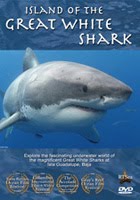The U.S. has been making some marked improvement in regulating the level of bycatch by commercial fishing operations. Bycatch is a critical issue in ocean conservation as it represents
 millions of tons of wasted sealife, from the loss of marine mammals, sharks, and turtles in longline nets to the "scorched earth" effect exhibited in shrimp harvesting techniques. Through the application of four different regulatory laws or agencies (the Migratory Bird Treaty Act, the Marine Mammal Protection Act, the Magnuson-Stevens Fishery Conservation and Management Act, and the Endangered Species Act), the level of bycatch is being federally monitored and managed through the use of government observers.
millions of tons of wasted sealife, from the loss of marine mammals, sharks, and turtles in longline nets to the "scorched earth" effect exhibited in shrimp harvesting techniques. Through the application of four different regulatory laws or agencies (the Migratory Bird Treaty Act, the Marine Mammal Protection Act, the Magnuson-Stevens Fishery Conservation and Management Act, and the Endangered Species Act), the level of bycatch is being federally monitored and managed through the use of government observers.One major issue though is the problem of having four different pieces of regulatory legislation, each with its own focus or emphasis on a particular situation or species. Involving this many cooks makes it difficult to get a more unifying and holistic approach to the entire issue. A recent report issued by Duke University's Marine Laboratory cited an approach by NOAA to establish a single set of regulations in 2006 for the Mid-Atlantic gillnet fisheries that proved to be a promising model and suggests that a review of existing regulations to develop a more cohesive strategy should be undertaken.
I had the opportunity to fly over the Northwest Passage in 2007 and see for myself the shrinking summer sea ice that had reached its lowest level in recorded history that year. As one could expect, there was a lot of alarming news coverage predicting an ice-free Northwest Passage within a few decades. Many computer models predicted the Arctic would lose its summer sea ice by 2080. But according to research by UCLA's Atmospheric and Oceanic Sciences Department, many of those models relied on ice data that reflected a gradual decline, but did not include the data from recent ice levels.
 With the growing awareness of the feedback effect of melting ice (exposing more heat-absorbing ocean to sunlight, thereby accelerating the melting process), the department's revised computer models move the clock forward by almost 20 years wherein we will be faced with an Arctic region devoid of most, if not all of its, summer sea ice - a monumental ringing of the alarm bell that global warming is now upon us.
With the growing awareness of the feedback effect of melting ice (exposing more heat-absorbing ocean to sunlight, thereby accelerating the melting process), the department's revised computer models move the clock forward by almost 20 years wherein we will be faced with an Arctic region devoid of most, if not all of its, summer sea ice - a monumental ringing of the alarm bell that global warming is now upon us.Methylmercury - that dangerous party favor that lies within much of the seafood we consume - must share its host fish with the more beneficial omega-3 fatty acids. Can a risk/benefit analysis
 determine which seafood would be more or less safe depending on species and frequency of consumption? This was the question that was studied recently and reported in Environmental Health Perspectives. The results of the study were not definitive but suggested that such a matrix could be developed. The report noted that farmed salmon, herring, and trout had a significant higher benefit vs. risk based on levels of methylmercury and omega-3 fatty acids. The opposite was true for swordfish and shark. Flounder and canned light tuna had a small benefit, while canned white tuna and halibut had a small risk.
determine which seafood would be more or less safe depending on species and frequency of consumption? This was the question that was studied recently and reported in Environmental Health Perspectives. The results of the study were not definitive but suggested that such a matrix could be developed. The report noted that farmed salmon, herring, and trout had a significant higher benefit vs. risk based on levels of methylmercury and omega-3 fatty acids. The opposite was true for swordfish and shark. Flounder and canned light tuna had a small benefit, while canned white tuna and halibut had a small risk.While the elimination of all methylmercury should be our ongoing focus, such a risk/benefit analysis matrix would be helpful in dealing with current seafood stocks, since methylymercury is retained in the tissues and would be present in many species for some time in the future.


















No comments:
Post a Comment